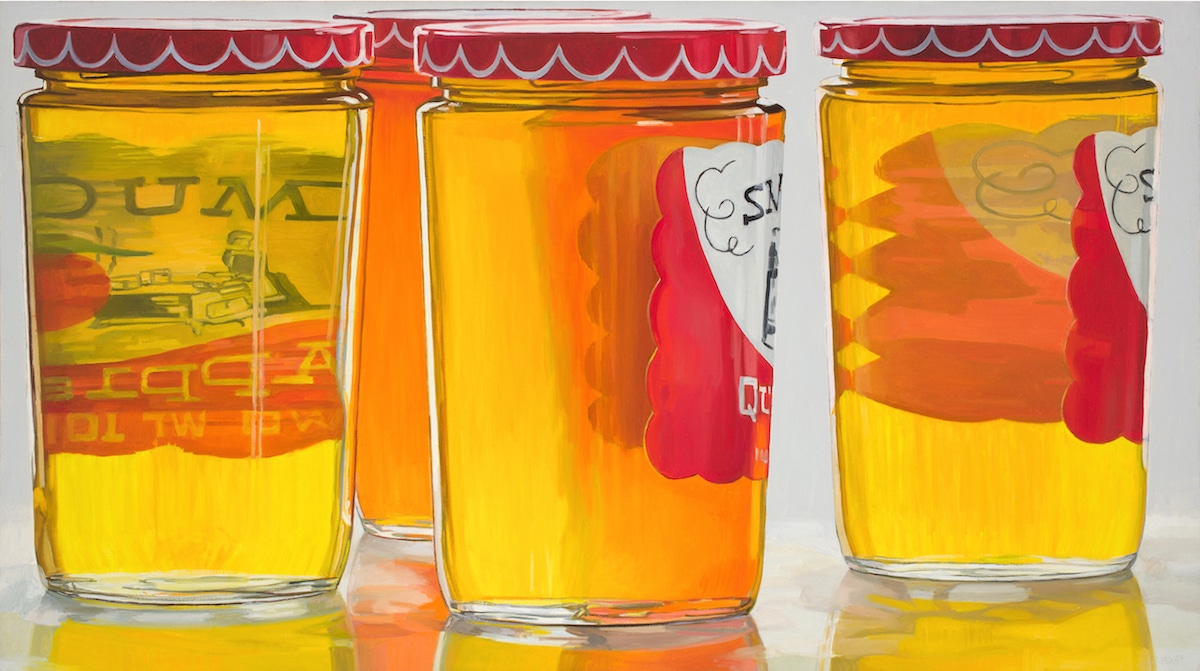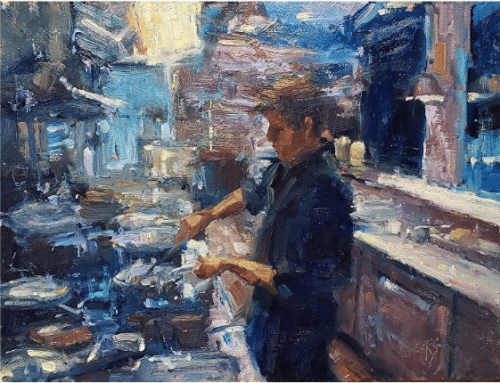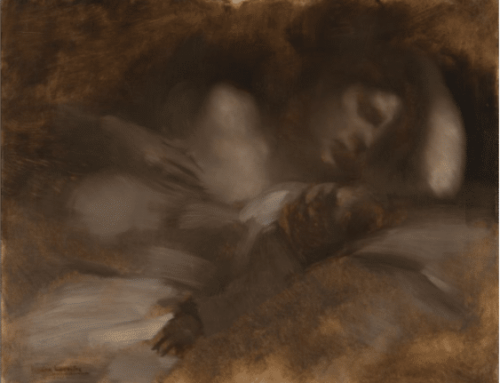“You can paint teddy bears for all I care. The subject of a painting is the responsibility of the artist. What you must do is make a commitment to the image and to the idea.”
— Janet Fish
According to painter Janet Fish (b. 1938), an artist makes her name by making and sticking to a commitment to her imagery and the idea behind her paintings of it. Simply put, Fish paints still lifes, mostly of colorful fruit and glassware, with intense color and alternately tight and seemingly spontaneous execution.
But there’s so much more in these paintings.
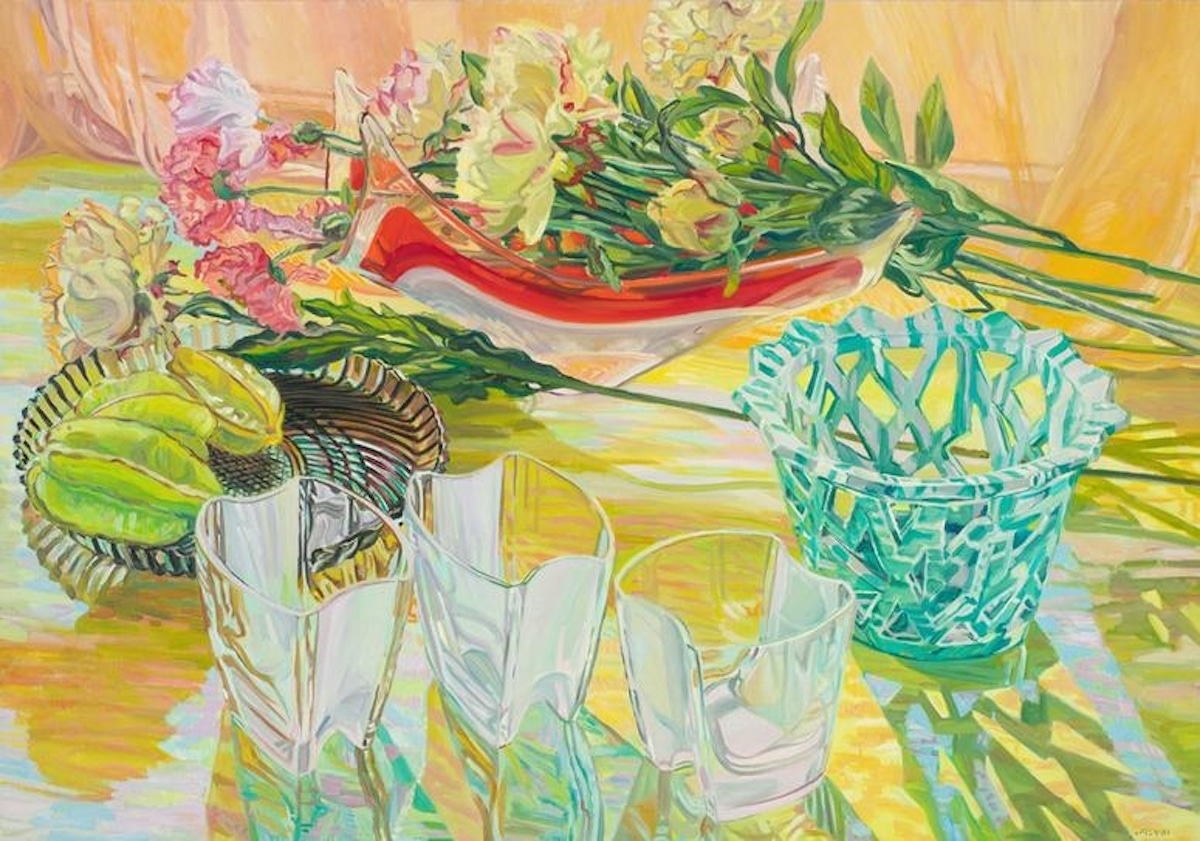
Lattice Vase, 2001 Oil on linen, 42 x 60 inches
There’s a mad, virtuoso celebration of eye-popping light and color. There’s a Matisse-like exuberance. There’s a No to mid-century non-representational art and a Yes to 1950s gestural abstraction and another Yes to its 1960s successor, Pop Art, all of which she lived through unchanged.
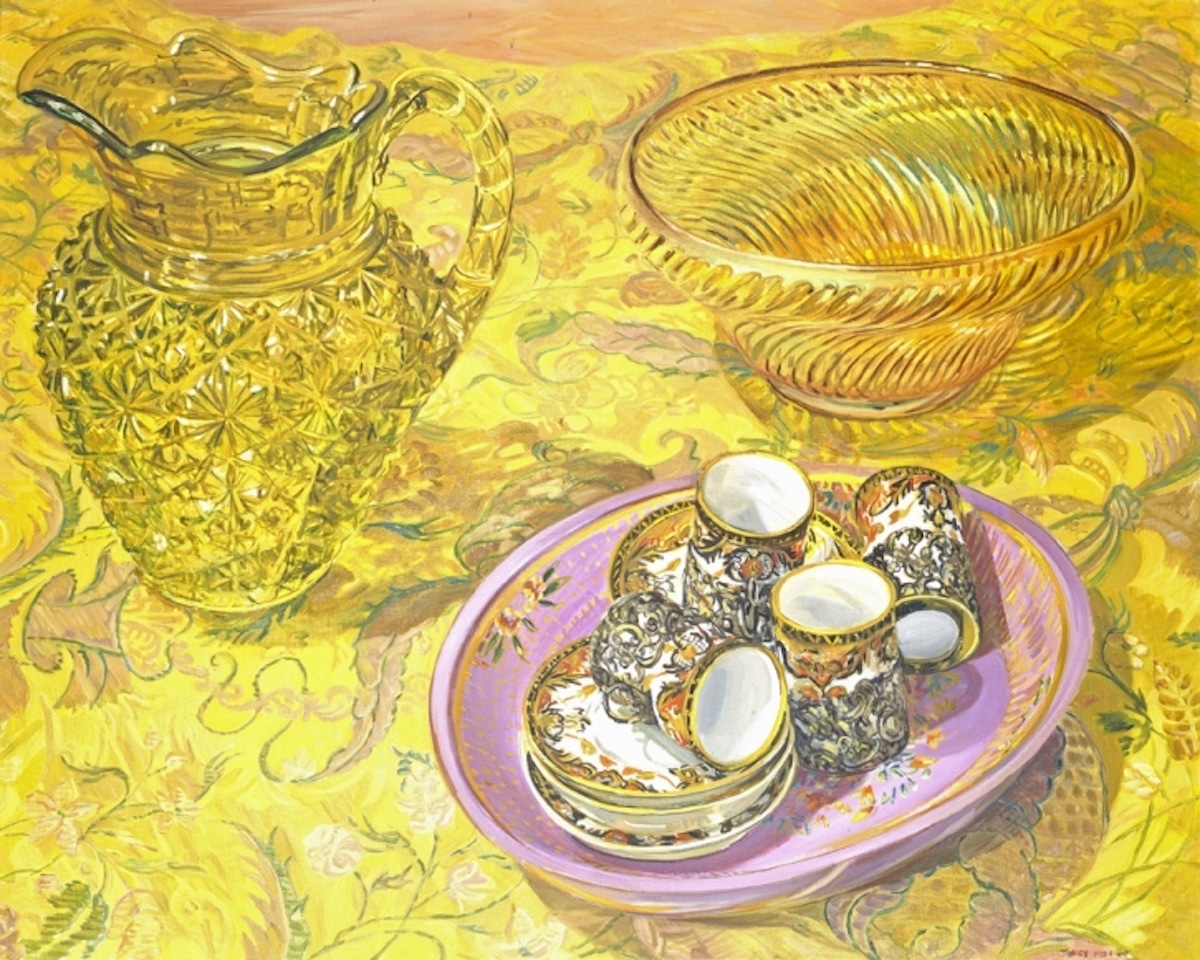
Bob’s Brocade, 2000 Oil on linen 40 x 50 inches
Most important of all, as I read it, there is a big giant YES to life, in painting after painting: YES to life, over and over again.
But don’t think it’s because of what she paints – it’s in what she puts into her paintings. No one else would think to assemble the same still life arrangements and paint them as Janet Fish does. Fish’s formidable awesomeness emerges from her “commitment to the image and the idea” (which I interpret to mean both a way of seeing and a form of expression). You might say she chooses such wild, intricate, colorful subjects because that’s how she sees and wants to paint LIFE.
More technically, I see a set of loose “rules”:
- large paintings (three or four feet or more in size)
- big (higher key), almost clashing colors
- consistent subject matter (favoring translucent glassware and back-plane patterning)
- novel compositions with strong original underlying geometries and
- alternately precise and spontaneous handling.
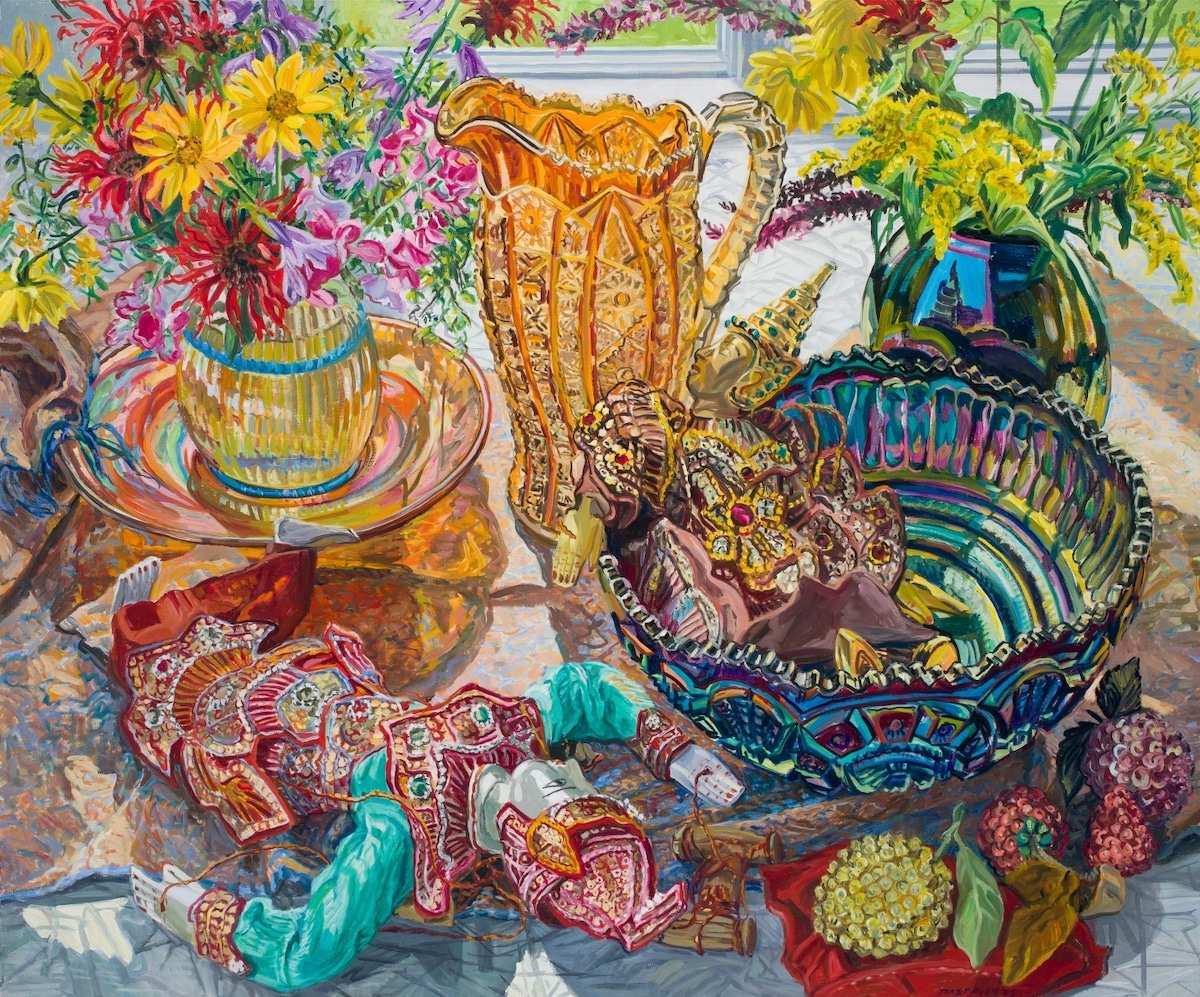
Sequins, 2003 Oil on canvas 50 x 60 inches
You have to commit to what you paint (“the image”), and you have to commit to your way of painting it (“the idea”).
Fish’s work and words make me to want to make my own commitment – to an ecstatic appreciation of life! That’s what good art will do.
And flowers in art – sign me up. I’m glad to know there is a generation of teaching artists out there ensuring the forms and colors of the garden , at least on canvas, never fade.
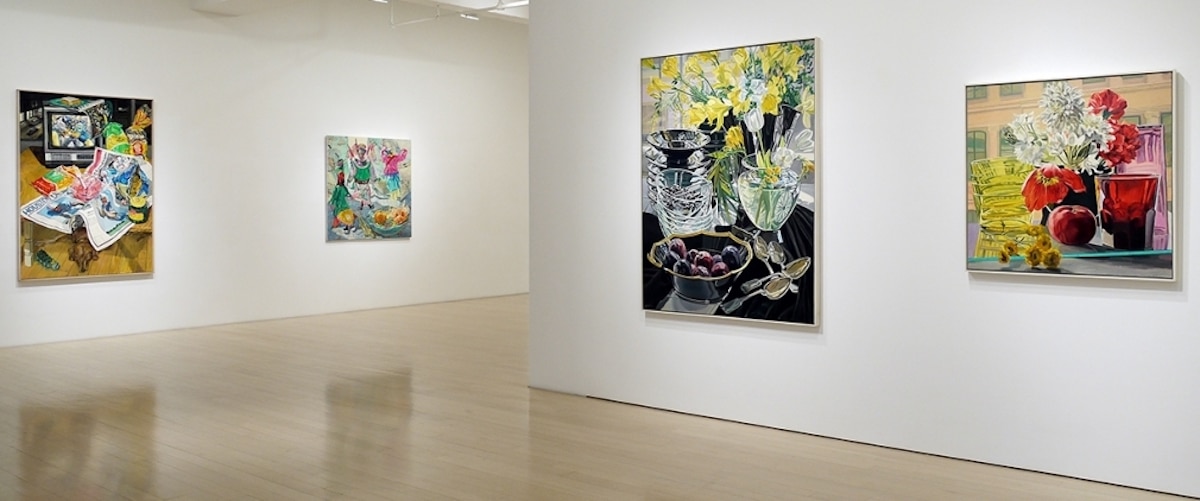
Installation Janet Fish – Pinwheels and Poppies, Paintings 1980-2008, 2017
Entire Free Art History Video Course Online!
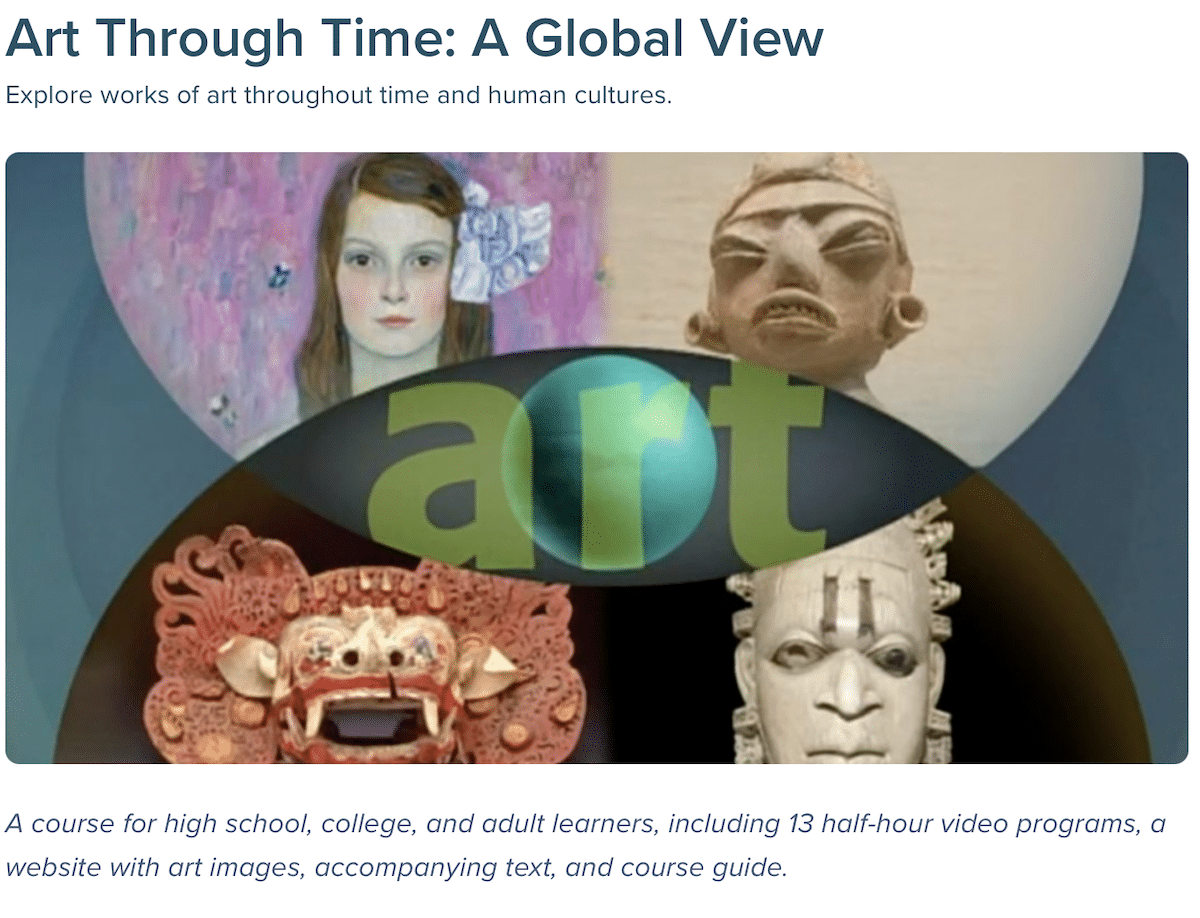
Art Through Time: A Global View, a free, complete online art history course, examines themes connecting works of art created around the world in different eras. The thirteen-part series explores diverse cultural perspectives on shared human experiences.
Says the course description: Take a trip across the world and back through the ages to experience the art of many cultures and historical periods. Thirteen themes encompass hundreds of paintings, drawings, sculptures, photos, and works in non-traditional media in this vibrant approach to the study and appreciation of art. International artists, scholars and curators from major museums and specialized collections guide the viewer through the millennia of human thought and expression while contemporary artists and their work bring the forms into the present day. An extensive website includes sortable images of more than 250 works, as well as online text helping viewers to explore the works and topics in greater depth. The series, text, and web resources can be used to supplement art history courses, or for individual learning and enrichment.examines themes connecting works of art created around the world in different eras. The free thirteen-part series explores diverse cultural perspectives on shared human experiences.

